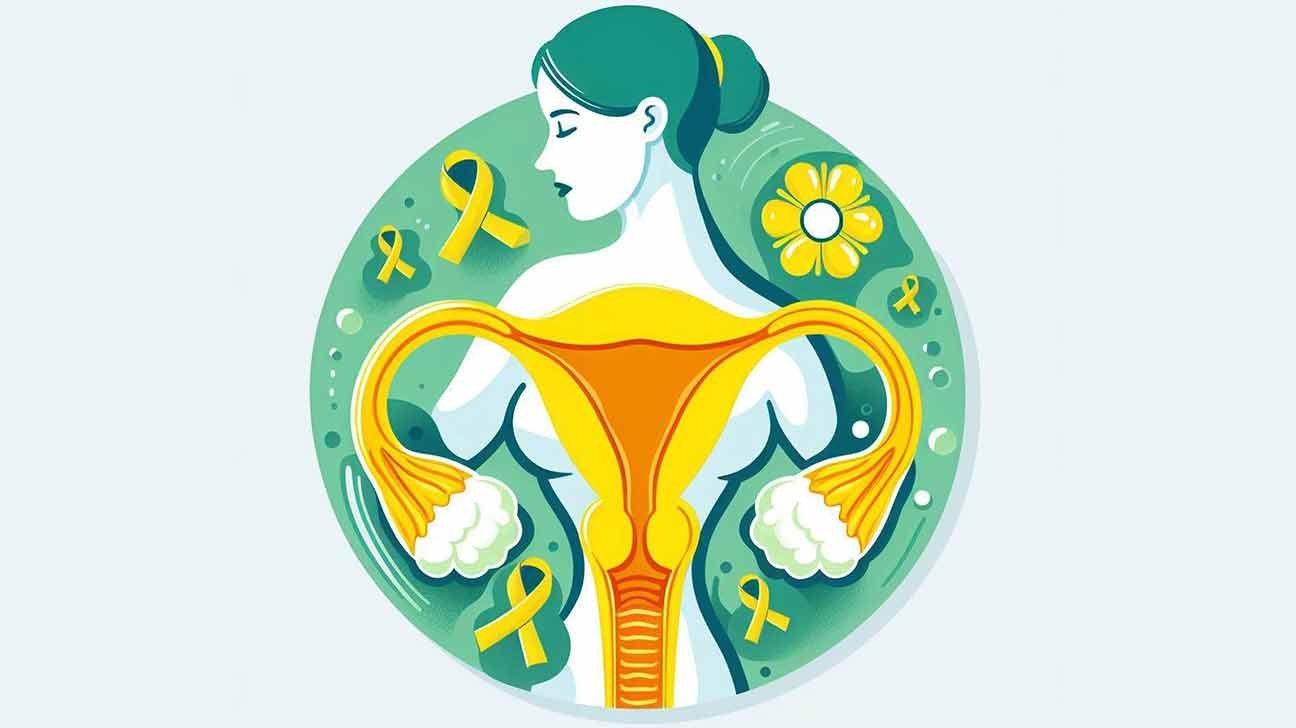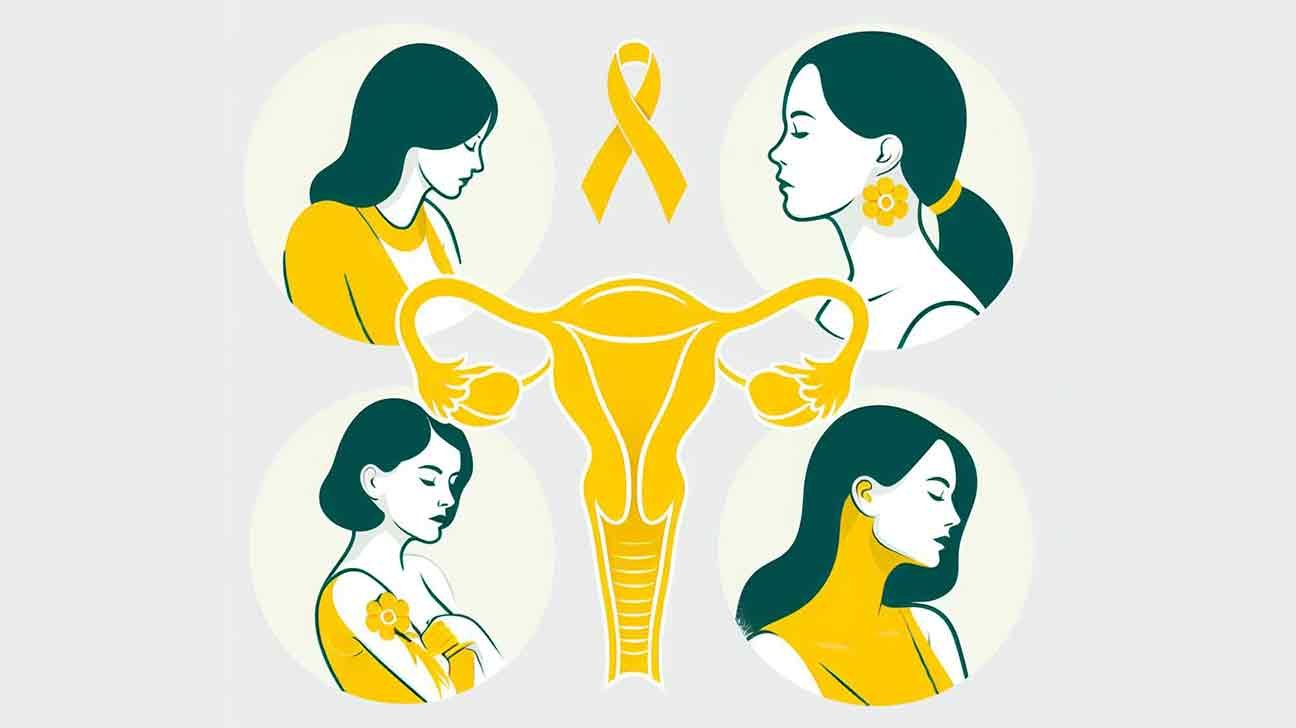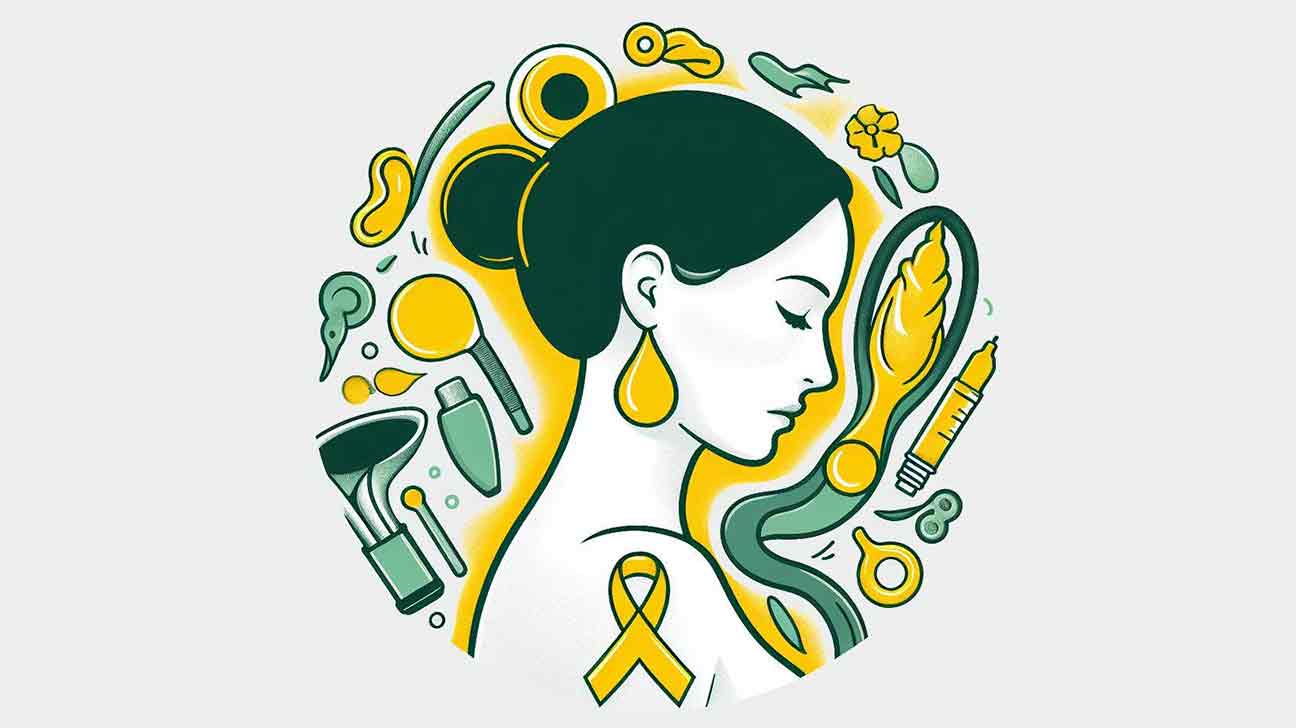Cervical cancer can develop without any noticeable symptoms in its early stages, but there are often warning signs that may indicate its presence. Here’s a personal recount of the common symptoms and warning signs that some women have experienced, which led them to seek medical advice and ultimately discover they had cervical cancer.
Warning Signs of Cervical Cancer:
- Unusual Vaginal Bleeding
- Many women notice abnormal bleeding as the first sign. This may occur between periods, after sexual intercourse, or even after menopause. For some, the bleeding might be light spotting, while for others, it may be heavier than usual.
- Personal accounts often describe bleeding as an unexpected and unexplained symptom that prompted them to seek medical attention.
- Abnormal Vaginal Discharge
- Women with cervical cancer may experience watery, pink, or foul-smelling discharge. This discharge can appear more frequently than normal and may have an unusual texture or odor.
- In some cases, the discharge is clear but persistent, making it a significant change in their normal vaginal health.
- Pelvic Pain or Discomfort
- Some women report pain or discomfort in the pelvic region, which may feel like a constant dull ache or cramping that doesn’t seem to be related to menstrual cycles. This pain can also extend to the lower back or legs.
- Pain during or after sexual intercourse is another sign that prompts concern and medical evaluation.
- Painful Urination
- In advanced cases, some women experience pain or discomfort during urination. This can happen due to cancer spreading to nearby tissues, causing inflammation or irritation of the bladder.
- Fatigue and Weight Loss
- Extreme tiredness or unexplained weight loss are other symptoms women sometimes experience in later stages, although these signs are more generalized and not unique to cervical cancer.
- Menstrual Changes
- Changes in menstrual cycles, such as periods becoming heavier or lasting longer than usual, can also be an early warning sign.
Personal Accounts of Early Signs
Many women who later received a cervical cancer diagnosis recount that they initially thought their symptoms were related to other common conditions, like hormonal imbalances, infections, or normal aging. However, a key takeaway from these experiences is that persistent or unexplained symptoms should never be ignored, and seeking medical evaluation is essential for early detection.
Importance of Pap Smears and HPV Testing
Several women have also shared how routine Pap smears and HPV testing were instrumental in detecting precancerous changes before symptoms even appeared. These screenings are critical for catching cervical cancer in its early stages when it’s most treatable.
If you’re experiencing any of these symptoms, it’s crucial to visit a healthcare provider for an evaluation. Early detection can significantly improve outcomes.

I knew I had cervical cancer when I noticed abnormal bleeding and discharge. Cervical cancer is a type of cancer that starts in the cervix, the lower part of the uterus that connects to the vagina.
It is typically caused by the human papillomavirus (HPV) and can be detected through regular Pap tests or HPV screenings. Symptoms of cervical cancer may include abnormal bleeding or discharge, pain during sex, and pelvic pain. If left untreated, cervical cancer can spread to other parts of the body and become life-threatening.
It is important to maintain regular gynecological check-ups and to speak with your doctor if you experience any unusual symptoms. Early detection and treatment can greatly improve the chances of recovery.
What Is Cervical Cancer?
Cervical cancer is a type of cancer that occurs in the cervix, the lower part of the uterus that connects to the vagina. It can be a slow-growing cancer, and there may be no symptoms in the early stages. However, as the cancer grows, symptoms may develop and can include abnormal vaginal bleeding, unusual discharge, pain during sex, and lower back pain.
Risk Factors For Cervical Cancer
Several risk factors can increase the chances of developing cervical cancer, including:
- Human papillomavirus (HPV) infection
- Smoking
- Having a weakened immune system
- Having a history of sexually transmitted infections (STIs)
- Hormonal contraceptive use
- Having a family history of cervical cancer
If you are at an increased risk for cervical cancer, it is important to be aware of the symptoms and to get screened regularly.
Importance Of Regular Screening For Cervical Cancer
Regular screening can help detect cervical cancer early, when it is most treatable. The two primary screening tests for cervical cancer are:
| Screening Test | Frequency |
|---|---|
| Pap test | Every 3 years for women ages 21-65 |
| HPV test | Every 5 years for women ages 30-65 or co-testing (Pap and HPV) every 5 years |
It is important to talk to your healthcare provider about what screening schedule is
for your individual needs.
By knowing the risk factors for cervical cancer and the importance of regular screening, you can take steps to protect yourself against this type of cancer. If you experience any unusual symptoms or are due for your regular screening, be sure to talk to your healthcare provider about your options.
Cervical Cancer Symptoms
As a woman, it’s important to take care of your reproductive system, but sometimes life gets in the way, and we may ignore some signs and symptoms that something is wrong. I want to share my personal experience with cervical cancer so that my story can help others be vigilant and proactive with their health.
Symptoms That Led Me To Seek Medical Advice
One of the earliest symptoms I noticed was abnormal vaginal bleeding between periods. This was unusual for me, and I could feel that something was off. I also experienced heavier periods, lower back pain, and pelvic pain. I tried to ignore these symptoms at first, thinking it was just stress or a minor hormonal imbalance. But when the symptoms persisted, I knew I had to seek medical advice.
Initial Diagnosis Process
My gynecologist performed a pelvic exam and Pap smear and sent the samples to a lab. The Pap smear test result came back normal, but when my gynecologist reviewed additional imaging tests, they discovered a suspicious area on my cervix. Next, I underwent a colposcopy for a closer examination of the suspicious area. The colposcopy showed abnormal cells, and a biopsy confirmed the diagnosis of cervical cancer.
It was a difficult and scary time for me, but I’m grateful I acted on my instincts and sought medical advice when I did. I want to encourage women who are experiencing abnormal symptoms to listen to their bodies and seek help immediately. It could make all the difference in their health and well-being.
Further Testing
After receiving an abnormal Pap smear, I scheduled further testing that revealed I had cervical cancer. I experienced no symptoms beforehand, and early detection helped save my life. Regular cervical cancer screenings are crucial for all women.
After receiving an abnormal Pap smear result, I went to my doctor for further testing. This is important because abnormal results could indicate cervical cancer or other health issues that need immediate attention. The next steps included biopsies, colposcopies, and additional screenings recommended by my doctors.
Additional Screenings Recommended By Doctors
My doctor recommended additional screenings to confirm the diagnosis and the extent of the disease. These screenings included imaging tests such as ultrasounds, MRI, and CT scans. Blood tests were also done to check for tumor markers that could indicate the presence of cancer. It’s essential to follow the doctor’s recommendations for screening and not delay them.
Importance Of Timely Follow-up Appointments
Timely follow-up appointments are crucial in tracking and managing cervical cancer. After my diagnosis, I had to go through multiple rounds of treatment while monitoring it for further development. Skipping an appointment could delay treatment and impact the success of the treatment. I was vigilant about keeping my appointments and following my doctor’s instructions. In conclusion, follow-up appointments are essential, and additional screenings can help with the diagnosis and managing the disease. Cervical cancer is treatable if caught early, and it’s vital to be proactive about regular testing and following up with recommended care.

Receiving The Diagnosis
Getting a cancer diagnosis is one of the most difficult things that can happen in a person’s life. It can be especially tough when the diagnosis is cervical cancer. I remember when I received the news. It was one of the most significant moments of my life, and it changed everything for me.
My Emotional Reaction To The News
When the doctor told me I had cervical cancer, I was in shock. It was like the floor had fallen out from under me. My mind was racing with all sorts of questions and thoughts, but at the same time, I felt numb. Everything seemed surreal.
After the initial shock wore off, I went through a range of emotions. I felt angry, sad, frustrated, and scared. But mostly, I felt overwhelmed. It was as if I had just been handed a death sentence, and I didn’t know what to do next.
How My Loved Ones Reacted And Supported Me
Thankfully, I had the support of my family and friends. They were there for me every step of the way, and I don’t think I could have gotten through it without them. They listened to me when I needed to vent, helped with everyday tasks when I was too weak to do them myself, and provided the emotional support I needed to keep fighting.
My husband was my rock throughout the whole process. He went to every doctor’s appointment with me, stayed up late with me when I couldn’t sleep, and made sure I had everything I needed at all times. He never once let me feel like I was going through this alone, and I am forever grateful for his love and support.
My parents were also incredible during this time. They took turns visiting me in the hospital and brought me home-cooked meals to help me regain my strength. They even helped me research treatment options and find the best doctors in the area.
Conclusion
Receiving a cervical cancer diagnosis is a life-changing experience that can be challenging to come to terms with. However, having a strong support system in place is essential. My loved ones were there for me every step of the way and gave me the courage to keep fighting. If you or someone you know is going through a similar experience, know that there is hope, and you are not alone.
Cervical Cancer Treatment
Early detection is key in cervical cancer, and treatment options vary depending on the stage of the cancer. Common treatments include surgery, radiation, chemotherapy, and targeted therapy. It’s important to discuss all options with your doctor and create a personalized treatment plan.
ItSurgical Options For Cervical Cancer
After being diagnosed with cervical cancer, one of the treatment options is surgery. Surgery is particularly effective in the early stages of the disease when cancer has not spread beyond the cervix. There are different surgical options available, including cone biopsy, radical trachelectomy, and hysterectomy, depending on the extent and location of the cancer. Cone biopsy is a procedure that removes a cone-shaped piece of tissue that includes cancer cells while preserving most of the cervix. Radical trachelectomy involves removing the cervix and upper part of the vagina, but preserving the uterus for women who want to have children in the future. Hysterectomy is the removal of the cervix and uterus.
Radiation Therapy And Chemotherapy
Radiation therapy and chemotherapy are other treatment options for cervical cancer that are usually recommended when cancer has spread beyond the cervix or has come back after treatment. It involves using high-energy X-rays or other types of radiation to kill cancer cells. Chemotherapy involves using drugs or medicines to destroy cancer cells. Both radiation therapy and chemotherapy may be used in combination with surgery or alone. The choice of treatment depends on the stage and extent of cancer, a woman’s overall health, and other factors.
Conclusion
In summary, treatment options for cervical cancer include surgery, radiation therapy, chemotherapy, or a combination of these. Each treatment has its own benefits and risks, and the best option depends on factors such as the stage and extent of cancer, a woman’s overall health, and personal preferences. It’s essential to discuss all available treatment options with your healthcare provider to determine the most appropriate one for you. Early detection and treatment are critical to improving the chances of curing cervical cancer.

Side Effects Of Treatment
Experiencing side effects from cancer treatment is a common occurrence for many individuals. In my personal experience with cervical cancer, I knew I had the condition because of the noticeable side effects from my treatments. These included fatigue, hair loss, and skin irritation.
Physical Side Effects
During my cervical cancer treatment, I experienced various physical side effects. The severity and type of side effects differ from person to person and depend on the type of treatment. The following are some of the common physical side effects that I experienced:
- Abdominal pain and discomfort
- Nausea and vomiting
- Fatigue and weakness
- Diarrhea and constipation
- Bladder problems
- Loss of appetite and weight loss
It is essential to note that not everyone experiences all of these side effects. Additionally, some may encounter other physical side effects that were not mentioned here.
Emotional Impact Of Treatment
Aside from the physical side effects, my cervical cancer treatment also took a significant emotional toll on me. Here are some of the things I experienced:
- Depression and anxiety
- Stress and fear
- Isolation and loneliness
- Low self-esteem and self-worth
Coping with the emotional impact of treatment is just as crucial as managing the physical effects. Speaking with a therapist or joining a cancer support group can help in managing these emotions.
Coping With And Accepting The Diagnosis
Realizing unusual bleeding during my monthly cycle, I reached out to my gynecologist, who diagnosed me with cervical cancer. Coping with and accepting the diagnosis was tough at first, but I was determined to fight it.
After a routine check-up, I was devastated to hear that I had cervical cancer. The news was a shock to me, and I went through a series of emotions; from denial to anger, and eventually acceptance. Being diagnosed with cancer can be overwhelming, and I felt as if my whole world had come crashing down. However, with the right support and mindset, I learned to cope with the diagnosis and accept it as a part of my life.
Finding Support Groups And Therapy Options
Finding the right support group was key in helping me come to terms with my diagnosis. Talking to others who had gone through the same experience helped me understand and come to grips with what was happening in my life. Additionally, attending therapy sessions was also essential in finding ways to cope with the emotions and mental stress that came with the diagnosis.
Adjusting To A New Outlook On Life
It was a daunting task to have to adjust to a new perspective on life post-cancer diagnosis. I had to reset my priorities and focus on what was truly important, like my health and wellbeing. This meant shifting my focus to healthy living, such as eating healthier meals, exercising regularly, and reducing stress. It was not easy, but it helped me develop a more positive attitude towards life and appreciate the little things in life. In conclusion, dealing with a cervical cancer diagnosis was not easy, but I learned to accept and cope with it through the right support, mindset, and attitude. Finding the right support groups, attending therapy sessions, and adjusting to a new outlook on life all played a crucial role in helping me move forward and lead a fulfilling life post-cancer diagnosis.
Advice For Others
Receiving a diagnosis of cervical cancer can be life-changing. Like every other form of cancer, early detection is essential to ensure successful treatment. There are certain things you can do to safeguard your health and well-being. Here are some pieces of advice for others:
Educating Yourself About Cervical Cancer
As they say, prevention is better than cure. Similarly, being aware of what cervical cancer is and its symptoms can be crucial. Several reliable online resources provide information on cervical cancer, including the American Cancer Society website, National Cervical Cancer Coalition, and Centers for Disease Control and Prevention. Learn about the common symptoms, risk factors, and screening options for cervical cancer.
| Symptoms | Risk Factors | Screening Options |
|---|---|---|
|
|
|
Advocating For Your Health And Screenings
It’s essential to advocate for your health and undergo regular screenings. Speak with your healthcare provider about your risk factors, your past Pap test results, and your symptoms to find the best screening schedule for you. Your insurance provider or local health department might also provide free cervical cancer screenings, so make sure to check that out annually. Ensure that you keep track of your screenings and diligently attend them. Promptly report any new or concerning symptoms to your healthcare provider.
Early detection can be critical in the successful treatment of cervical cancer, and it can save your life. So, take care of yourself, stay educated about cervical cancer, and above all, prioritize your health.

Cervical Cancer Ribbon:
The ribbon color associated with cervical cancer awareness is teal and white. Teal represents cervical cancer awareness, while white signifies hope and support for those affected by the disease. Ribbons are often used as symbols of awareness and support for various causes, including cancer awareness.
Cervical Cancer Ribbon Color
The ribbon color associated with cervical cancer awareness is teal and white. Teal represents cervical cancer awareness, while white signifies hope, support, and remembrance for those affected by the disease.
Is cervical cancer hereditary?:
While cervical cancer can run in families due to inherited genetic mutations, most cases are caused by human papillomavirus (HPV) infection, which is a sexually transmitted infection.
Stage 4 cervical cancer life expectancy with treatment:
Life expectancy for stage 4 cervical cancer varies depending on various factors such as overall health, age, response to treatment, and other individual factors. It’s best to discuss this with a healthcare professional who can provide personalized information.
Cervical cancer stories:
There are numerous personal stories and accounts of individuals who have experienced cervical cancer. These can be found through various platforms, including online forums, support groups, and advocacy organizations.
Can you have sex with cervical cancer?:
It’s generally not recommended to engage in sexual activity if you have cervical cancer, especially during treatment. It’s crucial to consult with your healthcare provider for personalized advice.
Cervical cancer symptoms reddit:
Reddit can be a resource for discussions and information sharing, including discussions about cervical cancer symptoms. You may find relevant threads or communities by searching within Reddit.
Ribbon cervical cancer:
The ribbon color associated with cervical cancer awareness is teal and white.
Cervical cancer awareness ribbon:
The ribbon color associated with cervical cancer awareness is teal and white.
Cervical cancer bow:
Bows are often used as symbols of support and awareness for various causes, including cervical cancer. They may be made in teal and white colors to represent cervical cancer awareness.
Cervical cancer MRI:
MRI (Magnetic Resonance Imaging) can be used in the diagnosis and staging of cervical cancer to assess the extent of the disease and its spread to nearby tissues or organs.
Cervical cancer tattoo:
Some individuals may choose to get tattoos to symbolize their experience with cervical cancer or to honor loved ones affected by the disease. These tattoos can vary widely in design and meaning, ranging from ribbons to inspirational quotes or symbols of resilience.
Cervical cancer tattoos:
Similarly, cervical cancer tattoos can vary widely in design and meaning, serving as personal expressions of one’s journey with the disease or as tributes to those affected by it.
Color of cervical cancer ribbon:
As mentioned earlier, the color of the cervical cancer awareness ribbon is teal and white.
Cervical cancer leg pain stories:
Leg pain can be a symptom of advanced cervical cancer if the cancer has spread to other parts of the body. Stories about leg pain related to cervical cancer may be found in personal accounts shared by survivors or on online forums and support groups.
Cervical cancer survivors:
Cervical cancer survivors are individuals who have been diagnosed with cervical cancer and have successfully completed treatment. Their stories of diagnosis, treatment, and survivorship can offer hope and inspiration to others facing similar challenges.
Cervical cancer 中文:
In Chinese, cervical cancer is translated as “宫颈癌” (gōng jǐng ái).
Can you have intercourse with cervical cancer?:
It’s generally not recommended to engage in sexual activity if you have cervical cancer, especially during treatment. It’s essential to follow your healthcare provider’s advice and discuss any concerns you may have regarding sexual activity.
Cervical cancer hereditary disease:
While cervical cancer can have a hereditary component due to inherited genetic mutations, the primary cause is human papillomavirus (HPV) infection, which is sexually transmitted. Having a family history of cervical cancer may increase the risk, but it doesn’t necessarily mean it’s directly hereditary in the same way as some other diseases.
Cervical cancer ribbon tattoo:
A cervical cancer ribbon tattoo is a personal expression of support or remembrance for those affected by cervical cancer. It typically features the teal and white ribbon, the symbol of cervical cancer awareness, often combined with other elements such as meaningful quotes, dates, or symbols.
Cervical cancer shirts:
Cervical cancer awareness shirts are clothing items designed to raise awareness about cervical cancer. They often feature slogans, ribbons, or other symbols associated with cervical cancer awareness.
Cervical cancer staging radiology:
Radiological imaging, such as MRI or CT scans, can play a crucial role in staging cervical cancer by determining the extent of the disease and whether it has spread to nearby tissues or organs. These imaging techniques help in planning appropriate treatment strategies.
Cervical cancer symbol:
The symbol most commonly associated with cervical cancer awareness is the teal and white ribbon, representing support for those affected by the disease.
Cervical cancer tattoos ideas:
Ideas for cervical cancer tattoos can vary widely and are often personal to the individual. Some ideas include incorporating the teal and white ribbon, meaningful quotes, symbolic images like butterflies (representing transformation), or personal elements such as dates or names.
Cervical stump cancer:
Cervical stump cancer refers to cancer that develops in the remaining portion of the cervix after a subtotal hysterectomy (removal of the uterus while leaving the cervix intact). It is a rare but possible complication of this surgical procedure.
Cervical vs. ovarian cancer:
Cervical cancer and ovarian cancer are two distinct types of cancer that affect different parts of the female reproductive system. It develops in the cervix, while ovarian cancer originates in the ovaries. They have different risk factors, symptoms, and treatment approaches.
Family history of cervical cancer ICD-10:
The ICD-10 code for documenting a family history of cervical cancer is Z80.41.
AIS cervical cancer:
AIS (adenocarcinoma in situ) is a precancerous condition in which abnormal cells are found in the glandular tissue of the cervix. If left untreated, AIS can progress to invasive cervical cancer.
Frequently Asked Questions
What Is The Discharge Of Cervical Cancer?
The discharge of cervical cancer varies depending on the stage of the cancer. In the early stages, the discharge may be watery and odorless, while in advanced stages, it may be thick and blood-stained. It is important to have regular checkups and seek medical attention if you notice any changes in your discharge.
What Are The Symptoms Of Advanced Cervical Cancer?
Advanced cancer symptoms include vaginal bleeding in between periods, after sex or after menopause, increased vaginal discharge, pelvic pain, pain during sex, and difficulty urinating or defecating. If you experience any of these symptoms, it is important to consult a healthcare professional immediately.
How Long Can You Have Cervical Cancer Without Knowing?
It’s possible to have this cancer for years without showing symptoms, especially in the early stages. Regular Pap tests are crucial for detecting cervical cancer early on. It’s recommended that women between 21 and 65 years old get a Pap test every three years, or more frequently as advised by their doctor.
What Is The Longest You Can Live With Cervical Cancer?
The lifespan of a person with this cancer depends on various factors such as cancer stage, health condition, and the efficacy of treatment. Survival rates vary from person to person. So, it’s hard to answer precisely how long a person can live with cervical cancer.
Early detection and timely treatment increase survival chances.
What Are The Common Warning Signs Of Cervical Cancer?
Common symptoms of cervical cancer include abnormal vaginal bleeding, pelvic pain, and unusual discharge.
Can Cervical Cancer Be Detected Early?
Yes, It can be detected early through regular Pap tests and HPV screenings.
How Accurate Are Pap Tests For Detecting Cervical Cancer?
Pap tests can accurately detect changes in the cervix that may indicate the presence of this cancer.
Is Cervical Cancer Always Caused By A Sexually Transmitted Infection?
No, while certain strains of HPV can increase the risk of this cancer, not all cases are caused by STIs.
Can Cervical Cancer Be Treated Successfully?
Yes, It can be treated successfully if caught early, with options such as surgery or radiation therapy.
Is There A Way To Prevent Cervical Cancer?
Yes, practicing safe sex, getting regular HPV vaccinations, and attending regular medical checkups can help prevent cervical cancer.
Conclusion
Having cervical cancer is scary, but it is also treatable when detected early. Many women ignore their symptoms, but every symptom is an indication that something is wrong and should be addressed. Ignoring symptoms can lead to further complications that could have been prevented.
It is crucial to have regular checkups and talk to your doctor about any unusual signs or discomfort. Do not wait for something serious to happen, take action now and prioritize your health.



